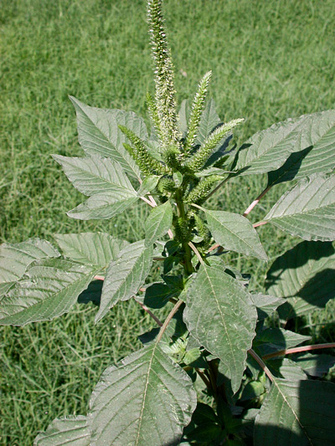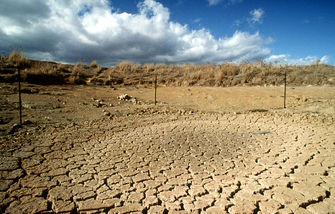« Prev Next »
It was only a few weeks ago when Astronaut Scott Kelly returned home after spending a year in space as part of perhaps the biggest space medical research project ever conducted. Astronaut Kelly's time spent on the International Space Station has not only opened up new insights into the effects of zero gravity on the human body, but it has also shone a new light on the field of botany.

Earlier this year, the International Space Station crew grew romaine lettuce via the Veggie system, but the zinnias are a leap forward because they are more challenging to grow, and the zinnias have most definitely had a rough path: they battled excessive water, drought, and even mold before beginning to recover in January. Unlike lettuce, zinnia plants are more sensitive to environmental parameters and light characteristics. Additionally, zinnia plants have a longer growth duration that lasts between 60 to 80 days. The success of the zinnia plants is promising for the growth of other flowering plants, such as tomatoes, in the future.
Throughout the course of a few months, the zinnia plants grew from trays of water with bags of seeds in calcined clay to increase aeration to help the plants grow. The plants were lit by LED lights and fertilized by an automatic release in a chamber wrapped in plastic. Through evaluating the growth of the zinnias, the NASA Veggie team learned that high-speed fans that were initially used to control the humidity of the environment caused an unintended mold outbreak and dried the plants, which required more frequent watering.
Through these experiments, the Veggie system will be gradually improved upon. As of now, there are plans to send two sets of Chinese cabbage, one set of red romaine lettuce, and dwarf tomato seeds to Veggie. Studies are also in progress to see how adjusting the light in the Veggie growth facility can affect the mineral composition of plants.
Growing Plants in Zero Gravity

It was later found that plants in zero gravity regulated the expression of their genes to compensate for a lack of gravity, and various plant parts evolved different gene expression strategies. For example, plant genes involved in the sensation of light, which are expressed in leaves on Earth, were expressed in the roots in a zero gravity environment. Additionally, in zero gravity, it was found that plants responded by loosening their cell walls.
However, the study ultimately concluded that there are no drastic impediments to the growth of plants in zero gravity, and this looks promising for the future of human space exploration.
References:
Nasa.gov. Growing Plants and Vegetables in a Space Garden (2010).
Nasa.gov. How Mold on Space Station Flowers is Helping Get Us to Mars (2016).
Nasa.gov. Veggie Plant Growth System Activated on International Space Station (2014).
Owen, J. "Plants Grow Fine Without Gravity." National Geographic. December 7, 2012.
Shekhtman, L. "Zinnias bloom on space station: What does it take to grow plants in space?" The CSM. January18, 2016.
Space.com. A Garden Grows in Space: First Zinnias to Bloom, to Astronaut's Delight (2016).
Image Credits:
1. The Zinnia Plant in Space Image is taken by Astronaut Scott Kelly and is distributed via Universetoday.com
2. The Veggie Growth Facility System Image is distributed via Nasa.gov
Palmer pigweed (Amaranthus palmeri) haunts the fields of many farmers around the nation. It grows more than six centimeters a day, can reach a stunning height of 2.5 meters, and can produce up to 600,000 seeds in its lifetime. Not to mention its notoriously tough stem that makes it nearly impossible for farming equipment to uproot.

Prior to the age of selective herbicides and GMOs (Genetically Modified Organisms), farmers fought weeds with tillage and hand weeding. However, tillage of large fields was both time-consuming and detrimental for the environment because it left valuable topsoil exposed to wind and water erosion. A more viable solution was imperative, and this came with the advent of Monsanto’s glyphosate active herbicide patent in the 1970s. Large-industrialized crop farmers around the world were finally able to control their unwanted weed populations. Sure, there were other herbicides before glyphosate, such as triazine, but those herbicides easily contaminated groundwater and harmed wildlife species through runoff waste. Roundup was a miracle chemical for farmers. It was able to kill a broad spectrum of weeds, and it was able to break down quickly to reduce its environmental impact.
Initially, glyphosate, or better known for its commercial name Roundup, was introduced as a nonselective herbicide (one that can kill all plants) before it became a narrow-spectrum or selective herbicide (one that kills a targeted weed). Once Roundup became a selective herbicide in 1990, sales took off as Monsanto created its Roundup Ready crops that were genetically modified to tolerate the chemical. Glyphosate herbicides kill plants by blocking the EPSPS enzyme, an enzyme involved in the synthesis of plant amino acids and vitamins. There are several ways in which a plant can be genetically modified to be tolerant to glyphosate. A widely used strategy is to incorporate a soil bacterium gene that produces a glyphosate-tolerant form of EPSPS. The incorporation of glyphosate-tolerant crops allowed farmers to spray their fields to kill weeds while leaving their crops unharmed. Today, Roundup Ready crops account for nearly 90 percent of soybeans and 70 percent of corn and cotton grown in the United States. However, Monsanto’s genetically modified crops have been notoriously nicknamed as terminator seeds because they are sterile. Each year, farmers must purchase the most recent strain of seed from Monsanto to continue using glyphosate herbicides.

In the words of Mike Owen, a weed scientist at Iowa State University, what we’re seeing is Darwinian evolution in fast-forward. Herbicide resistance is widely recognized as the result of adaptive evolution of weed populations to the selection pressure exerted by glyphosate herbicides. The least herbicide-sensitive plants have a selective advantage in weed populations with heavy doses of herbicides. Thus, they are able to increase in frequency and establish a population shift towards a population of herbicide-resistant plants.
Even though the race for new herbicides to replace glyphosate is on, weed scientists argue that the golden solution of glyphosate herbicides is too valuable to be thrown away. It is estimated that the total amount of United States farmland afflicted with Round-up resistant weeds is relatively small. Most scientists agree that farming in a post-Roundup age will be costly and inefficient. Farmers must revert to crop rotations, cultivations, tillage, and limited herbicide usage. However, if farmers across the nation do their part by rotating crops constantly and using various herbicides, this will slow the development of glyphosate-resistant weeds over time.
References:
Delye, C. et al. Deciphering the evolution of herbicide resistance in weeds. Cell 29, 649-658 (2013).
ISAAA. Herbicide Tolerance Technology: Glyphosate and Glufosinate (2014).
MIT.edu. About Roundup Ready Crops (2009).
MIT.edu. The Roundup Ready Controversy (2009).
Nature. A growing problem (2014).
Nature. War on weeds loses ground (2012).
Neuman, W. & Pollack, A. "Farmers Cope with Roundup-Resistant Weeds." The New York Times. May 30, 2010.
Phys.org. US 'superweeds' epidemic shines spotlight on GMOs (2014).
ScienceDaily. Farmers Relying on Herbicide Roundup Lose Some of its Benefit (2009).
Image Credits:
1. The Amaranthus palmeri Image is by Wikipedia user Pompilid and is distributed via Wikimedia Commons under a CC-BY license.
2. The Consecutive steps of herbicide action figure is from Deciphering the evolution of herbicide resistance in weeds by Christophe Delye, Marie Jasieniuk, and Valerie Le Corre and is distributed by Cell.com.

Known as the "breadbasket of the world", the U.S. alone exports more corn, wheat, and soybeans than any other country, and global food prices have rapidly escalated because of the crop shortage in America. Approximately 80 percent of the country's corn crops and 11 percent of its soybean crops have been affected. Major droughts in the past three years alone have collectively caused more than ten billion dollars in losses of crops in the U.S. As it becomes increasingly clear that America's drought crisis is the world's problem, research is being conducted in the hopes of discovering a mechanism to increase drought tolerance in plants.

Although it is possible for crops to be sprayed with ABA to assist their survival during droughts, ABA is expensive to synthesize and inactive inside plant cells. However, the agrochemical mandipropamid, which has been widely used to control late blight of crops, seems to mimic the action of ABA in engineered crops. Researchers in UC-Riverside worked with Arabidopsis, a plant widely used in labs, and the tomato plant to synthetically develop a new version of these plants' ABA receptors engineered to respond to mandipropamid instead of ABA. When these drought-affected plants were sprayed with mandipropamid, they survived drought conditions by turning on the ABA pathway, which closed their stomatas to prevent further water loss.
This discovery proves that synthetic biological innovation allows for crop improvement and can support a growing world population. Ultimately, the mandipropamid agrochemical was repurposed for a new application by genetically engineering a plant receptor, and this is something that has not been done before. It is anticipated that this reprogramming strategy using synthetic biology will allow scientists to control other plant traits, such as growth rates or disease resistance. Although this seems to be very promising for crop shortages caused by drought conditions, it is still a while away before mandipropamid and genetically engineered plant receptors can be applicable for all plants affected by drought.
References:
The Atlantic. America's Drought is the World's Problem (2009).
Phys.org. Researchers examine how to minimize drought impact on important food crops (2015).
Phys.org. Scientists reveal secrets of drought resistance (2009).
Phys.org. Scientists reveal underpinnings of drought tolerance in plants (2015).
Phys.org. World's largest drought resistance experiment on chickpeas under way at UVA (2014).
Finkelstein, R. Abscibic Acid Synthesis and Response. Arabidopsis Book. 2013; 11
ScienceDaily. Scientists reprogram plants for drought tolerance (2015).
Zhu, J. K. Salt and Drought Stress Signal Transduction in Plants. Annu Rev Plant Biol. 2002; 53: 247-73
Image Credits:
1. The Plant Drought Image is by Wikipedia user CSIRO and is distributed via Wikimedia Commons under a CC-BY license.
2. The ABA and PYR1 Molecule Complex is from Unnatural agrochemical ligands for engineered abscibic acid receptors by Rodriguez and Lozano-Juste and is distributed by Cell.com.
























